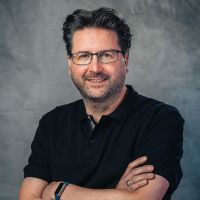
Alec De Grand
Mein Name ist Alec De Grand und ich bin Product Manager für virtuelles Objektträgerscannen und aufrechte Mikroskope bei Olympus. Ich arbeite seit über 10 Jahren bei Olympus und bin zuständig für klinische Produkte, Marketinginitiativen, Bildgebungskurse und Messen.

Bülent Peker
Hallo. Ich bin Bülent Peker und Experte für Laser-Scanning-Mikroskopie. Während meiner Promotion in physikalischer Chemie, wo ich mich mit der zeitaufgelösten Zwei-Photonen-Mikroskopie beschäftigte, wurde zum ersten Mal mein Interesse für Mikroskopie und Photonik geweckt. Seither hat mich dieses Thema nicht mehr losgelassen.
Ich arbeite seit über 13 Jahren bei Olympus, und in dieser Zeit haben wir hochmoderne Laser-Scanning-Mikroskope auf den Markt gebracht. Ich bin besonders fasziniert von der Anwendung von Multiphotonensystemen und den Anpassungsmöglichkeiten von Laser-Scanning-Systemen.

Chunsong Yan
Hallo, mein Name ist Chunsong Yan und ich bin Business Development Manager für Life Science bei Olympus Australia und New Zealand. Ich bin derzeit für konfokale, Multiphotonen-, Lichtscheiben- und Objektträgerscannersysteme verantwortlich. Ich arbeite seit 2003 für Olympus in wechselnden Tätigkeitsfeldern und versuche immer, für die Kunden die beste Lösung von Olympus zu finden.

Daniel Bemmerl
Mein Name ist Daniel Bemmerl und ich kann Sie bei allem unterstützen, was mit der 3D-High-Content-Analyse und der Bildgebung von Organoiden zu tun hat. Ich habe bei Olympus als Anwendungsspezialist für TIRF-Mikroskopie und High-Content-Analysen angefangen und mich jetzt auf 3D-Analysesoftware spezialisiert.
Ich habe mich besonders mit der molekularen und entwicklungsbedingten Stammzellbiologie befasst und stellte schnell fest, dass ich mich mehr für die technischeren Aspekte, besonders für die Bildgebung selbst, in der Wissenschaft interessiere als für die dargestellten Proben. Bei Olympus Life Science habe ich angefangen, weil mir die Idee gefallen hat, außerhalb des Labors und als Vermittler zwischen den Kunden und der Entwicklung zu arbeiten. Ich freue mich darauf, Ihre Fragen zur 3D-Bildgebung zu beantworten, und unterstütze Sie gern dabei, Ihre Bildgebungsabläufe zu verbessern, sodass Sie sich ganz auf Ihre Forschung konzentrieren können.

Dr. Nicolas Bourg
Hallo. Ich bin Dr. Nicolas Bourg, Chief Technical Officer (CTO) und Mitgründer von Abbelight, und Experte für Einzelmolekül-Lokalisationsmikroskopie (SMLM) bzw. Nanoskopie, bei der Techniken wie PALM, dSTORM, SPT-PALM and DNA-PAINT zur Anwendung kommen.
Ich bin ausgebildeter Optroniker mit einem Ph.D.-Abschluss in Biophotonik der Universität Paris-Saclay, wo ich mich mit einer speziellen 3D-Nanoskopietechnik mit beispielloser Auflösung befasste. Mein Forschungsteam und ich wollten das während meiner Doktorarbeit erlangte Wissen weitergeben und haben deshalb Abbelight gegründet: ein Startup, in dem wir die Nanoskopie noch leistungsfähiger und für jeden Biologen ohne fortgeschrittene Mikroskopie-Ausbildung uneingeschränkt zugänglich machen möchten. Ich stehe zur Verfügung, um all Ihre Fragen zur Nanoskopie zu beantworten. Kontaktieren Sie uns einfach!

Flavio Giacobone
Hallo, mein Name ist Flavio Giacobone und ich bin verantwortlich für Objektträgerscannerlösungen bei Olympus Europe. Ich interessiere mich schon immer für die Bildgebung und habe einen Abschluss in Biomedizintechnik. Bei Olympus konnte ich die Umstellung auf die Digitaltechnik in vielen klinischen und wissenschaftlichen Bereichen direkt miterleben. Meine Expertise im Bereich der Bildgebung von kompletten Objektträgern geht bis auf den ersten Scanner von Olympus, den dotSlide, zurück, und ich habe die späteren Weiterentwicklungen persönlich miterlebt.

Ganesh Kadasoor
Ich bin Ganesh Kadasoor und arbeite seit 15 Jahren im Bereich der High-End-Bildgebung für Olympus. Ich habe einen Bachelor- und Master-Abschluss in Biowissenschaften und einen Ph.D.-Abschluss in medizinischer Entomologie der University of Mysore, Indien. Ich begann meine Arbeit für Olympus als Spezialist für konfokale Mikroskopie und beschäftigte mich mit allen High-End-Bildgebungssystemen, d. h. mit Lebendzell-Bildgebungssystemen, konfokalen Laser-Scanning-Mikroskopen, TIRF, konfokalen Spinning Disk, Super-Resolution und Multiphotonen-Mikroskopen. Derzeit bin ich als National Manager (Applications Support) bei Olympus Medical Systems India Ltd., Bangalore, tätig und an der Durchführung von Schulungsprogrammen für Wissenschaftler, Akademiker und Vertriebsnetzwerke im ganzen Land beteiligt. Ich bin auch verantwortlich für die Organisation verschiedener Workshops zu Mikroskopie und Bildgebung, Seminare und Webinare und veranstalte nationale und internationale Mikroskopiekurse als Tutor/Ausbilder in Indien.

Heiko Gäthje
Hallo, ich heiße Heiko Gäthje. Meine Erfahrung in der Weitfeld- und konfokalen Fluoreszenzmikroskopie und Bildverarbeitung von 3D-Daten begann mit der Arbeit als Biologe. Meine Schwerpunktbereiche waren die neuronale Entwicklung von Insekten und die Struktur von Sialinsäure-bindenden neuronalen Proteinen bei Säugetieren.
Ich arbeite seit 2004 für Olympus und bin seit 2008 Mikroskopie-Ausbilder an der Olympus Academy, wo ich für die Konzeption und Einführung digitaler Lernwerkzeuge verantwortlich bin. Zudem unterstütze und leite ich Mikroskopie-Schulungen am EMBL Heidelberg und an der Zurich Winter School für fortgeschrittene Mikroskopie, in denen ich viele Fragen zur Bildverarbeitung und Bildanalyse beantworte.

Irina Rakotoson
Hallo, ich bin Irina und freue mich darauf, mit Ihnen über Lichtscheibenmikroskopie zu sprechen. Ich habe einen Master in Zellbiologie, Physiologie und Pathologie mit Schwerpunkt Alterungsprozess der Paris Descartes University. Bevor ich als Product Manager von PhaseView arbeitete, war ich in einem Forschungslabor für Neurowissenschaften (SPPIN) tätig, wo ich die Clearing-Protokolle für die Mikroskopie-Zentralabteilung optimierte.

Junsung Kim
Hallo, mein Name ist Junsung Kim und ich bin Product Specialist für konfokale Mikroskope bei Olympus Korea. Ich habe einen Master-Abschluss in Bioingenieurwesen der Korea University. Seit 2014 arbeite ich bei Olympus und unterstütze Kunden bei Anwendungen mit konfokalen Mikroskopen und Multiphotonenmikroskopen von Olympus.

Kathy Lindsley
Ich bin Kathy Lindsley und Application Specialist bei Olympus und für Kamera-Bildgebungssysteme zuständig. Ich habe einen Bachelor in Biochemie der Iowa State University. 2006 kam ich als Vertriebsmitarbeitern für Research Imaging zu Olympus, und seit 2012 arbeite ich in der Life Science Applications Group. Vor Olympus war ich 15 Jahre lang als wissenschaftliche Mitarbeiterin in der akademischen Forschung tätig und sammelte Erfahrungen in den Bereichen Patch Clamp, Calcium Imaging, Gewebekultur und Immunhistochemie.

Lauren Alvarenga
Hallo. Ich bin Lauren Alvarenga und arbeite als Product Manager für die wissenschaftliche Bildgebung bei Olympus, wo ich derzeit für Bildgebungssoftware sowie für inverse und hochauflösende Mikroskope verantwortlich bin. Ich habe einen Bachelor in Biomedical Photographic Communications des Rochester Institute of Technology.
Posttranskriptionelle Regulation des Nierenphosphattransporters Npt2a durch Parathormon. Seit 2015 arbeite ich bei Olympus und bin für die FLUOVIEW Produktserie in den USA, Kanada und Lateinamerika zuständig.

Manoel Veiga
Hallo. Mein Name ist Manoel Veiga und ich bin Teil des Teams, das die Deep Learning Technologie in die Software von Olympus implementiert hat. Ich bin seit 2017 für Olympus tätig und habe mir seither umfangreiches Fachwissen in den Bereichen High-Content-Analyse, Bildanalyse und Deep Learning angeeignet. Ich bin auch Experte für Lifetime-Fluoreszenzimaging.
Während meiner Doktorarbeit in physikalischer Chemie interessierte ich mich zum ersten Mal für die Datenanalyse. Dieses Interesse hat sich noch verstärkt, nachdem ich Convolutional Neural Networks und die unglaubliche Leistung dieser Netzwerke bei der Bildanalyse entdeckt hatte.

Minju Kim
Hallo, ich bin Minju Kim und Product Specialist bei Olympus Korea für biologische Mikroskope. Ich arbeite seit 2010 bei Olympus und bin als High-End-Vertriebs- und Produktspezialist für Lebendzellen und Fluoreszenz-Bildgebungssysteme tätig. Zudem bin ich für die Schulungsprogramme für die Vertriebshändler in Südkorea verantwortlich.

Rebecca Bonfig
Hallo. Mein Name ist Rebecca Bonfig und ich bin Product Manager bei Olympus für konfokale Mikroskope. Im Rahmen meiner Abschlussarbeit in der Abteilung für Physiologie und Biophysik der University of Louisville befasste ich mich mit der posttranskriptionalen Regulation des Nierenphosphattransporters Npt2a durch Parathormon. Seit 2015 arbeite ich bei Olympus und unterstütze die FLUOVIEW Produktserie in den USA, Kanada und Lateinamerika.

Shohei Imamura
Ich heiße Shohei Imamura. Ich arbeite als Strategic Project Manager für Olympus. Ich habe vier Jahre Erfahrung im Vertrieb von Mikroskopen für die Wissenschaft und sieben Jahre Erfahrung in der Produktplanung (insbesondere der Softwareentwicklung) und im strategischen Management und der Umsetzung von Projekten. Ich habe einen Bachelor der Meiji University in Japan.

Srivats Hariharan
Hallo. Mein Name ist Srivats Hariharan, alias Hari, und ich bin Product Manager für konfokale Mikroskopie, Multiphotonen- und Super-Resolution-Mikroskopie bei Olympus Singapore. Ich habe einen Bachelor in Maschinenbau der Nanyang Technological University, Singapur. Durch meine wissenschaftliche Arbeit in biomedizinischen Forschungslaboren und der A*STAR Microscopy Core Facility verfüge ich über umfassende Kenntnisse über konfokale und Lebendzell-Bildgebungstechnologien und half bei der Entwicklung der Super-Resolution-Mikroskopie von Einzelmolekülen und Lichtscheiben-Mikroskopie mit.
Seit 2011 bin ich Product Manager im Bereich Life Science von Olympus Singapore und unterstütze Kunden aus der Forschung und Geschäftspartner in Südostasien und Taiwan.

Stefan Marawske
Hallo, ich bin Stefan Marawske und Experte für hochauflösende Mikroskopie. Während meiner Doktorarbeit im Bereich der physikalischen Chemie habe ich selbst ein Mikroskop für die lokalisierungsbasierte Super-Resolution-Technologie und Partikelverfolgung entwickelt. Ich war fasziniert von der Tatsache, dass diese Methoden die berühmte Abbe-Grenze überschreiten und Strukturen abbilden konnten, die vorher nicht erkennbar waren.
Ich bin bereits seit mehr als 7 Jahren für Olympus tätig und hauptsächlich für High-End-Bildgebungssysteme wie TIRF und Spinning Disc zuständig. Diese Systeme bieten normalerweise eine sehr hohe Flexibilität, da viele verschiedene Geräte für verschiedene Anwendungen kombiniert werden können. Wenn Sie Hilfe bei speziellen Konfigurationen benötigen, wenden Sie sich einfach an mich.

Takeo Ogama
Ich bin Takeo Ogama,Senior Product und Strategy Planner sowie Product Manager für Mikroskopkameras bei Olympus. Durch meine 8-jährige Tätigkeit in der Forschungs- und Entwicklungsabteilung habe ich Erfahrung mit verschiedenen Produkten und Kameras. Darüber hinaus konnte ich auch acht Jahre lang Erfahrungen in Produktplanung, Marketing und Management sammeln. Bevor ich zu Olympus kam, erlangte ich einen Master in Neutrinophysik der Osaka Universität in Japan.

Wei Juan Wong
Hallo! Mein Name ist Wei Juan Wong und ich bin Product Specialist für Produkte im klinischen Bereich und der Forschung. Ich habe einen Abschluss in Physik und Erfahrung mit der Arbeit in einem biophysikalischen Forschungslabor und mit der Mikroskopie. Seit 2018 bin ich Product Specialist im Bereich Life Science bei Olympus Singapore. Ich unterstütze Kunden bei der Anwendung und bin für das Schulungsprogramm für Vertriebshändler in der Region Südostasien verantwortlich.

Klaus Willeke
Hello, I’m Klaus Willeke, Product Marketing Manager at Olympus Life Science Division and I’m responsible for our new X Line objectives. During my geology studies, the polarization microscope was an essential tool for determining and researching mineral compositions and structures. I was always fascinated by how colorful the world of minerals appears through a polarization microscope and how much you can discover with the help of light and good optics.
I’ve been working for Olympus for more than 22 years where I was 17 years a sales representative for industrial and life science microcopy in Germany and after that in European Product Marketing in the Scientific Solutions Division of Olympus, responsible for upright clinical and research microscopes and X Line lenses.

Dr. Hrishikesh Pai
Dr Hrishikesh Pai did his Fellowship in Reproductive Biology from the Royal Women’s Hospital, Melbourne Australia in 1989. He did his Masters in Clinical Embryology and Andrology from the Jones Institute, Eastern Virginia Medical School, USA in 2006. He has won 45 plus awards including the Honorary FRCOG from the Royal College of Obstetricians & Gynecologists, United Kingdom in 2019. Dr Pai has been the Past President of the Indian Society for Assisted Reproduction (ISAR) and is the present Director of Corporate Affairs for International Federation of Fertility Societies (IFFS). Dr Pai is the President Elect of the Federation of Obstetric and Gynecological Societies of India (FOGSI) with a membership strength of 37,000 members. It is the second largest medical body of gynecologists in the world, only second to the ACOG.
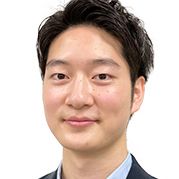
Hiroya Ishihara
Mr. Hiroya Ishihara is an Application Scientist at Olympus. He was studying the epigenetic factors involved in plant regeneration using omics and microscopy in Tokyo University of Science. Confocal and two-photon microscopy were his trusted partner at that time. Therefore, he joined Olympus to make life science more exciting with microscopes. Currently, he is working on a wide range of projects from basic research to product/sales strategy.

Dr. Gowri Balachander
Dr. Gowri Balachander is a Research Fellow at the Yong Loo Lin School of Medicine, National University of Singapore. She completed her PhD at the prestigious Indian Institute of Science, Bangalore, India where she worked on engineering 3D organotypic models for the study of breast cancer metastasis. At NUS, she currently works on morphogenetic models for human liver development and regeneration.
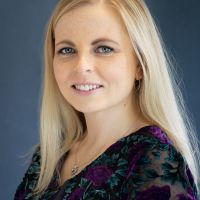
Joanna Hawryluk
Joanna Hawryluk is a product manager for Olympus Corporation of the Americas located in Waltham, MA. She has been with Olympus since 2017 within the Marketing department specializing in our 3D cell analysis software, lightsheet microscopy, electrophysiology, and our cell culture monitoring system. Dr. Hawryluk received her doctorate degree in Physiology and Neurobiology in 2016 from the University of Connecticut.
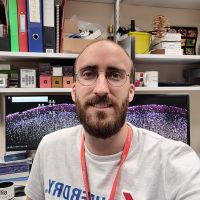
Benjamin Compans, Ph.D.
Benjamin received his Ph.D. from the University of Bordeaux. During his Ph.D., in the group of Dr. Choquet at the Interdisciplinary Institute for Neuroscience, he studied the nanoscale organization of glutamate receptors at excitatory synapse and its importance for synaptic plasticity. In 2018, he joined the lab of Professor Burrone at King’s College London for his postdoc where he investigates the molecular organization of inhibitory synapses and its role in regulating neuronal firing, a project for which he obtained a Marie Sklodowska-Curie Action postdoctoral fellowship.

Lin Guo
Lin got his PhD back in 2010 in National University of Singapore working on biophysical research. From 2009 he joined Olympus as Technical and Application specialist taking care of laser based high end imaging system. In 2012, Lin decided to move back to China and taking a position with one of the leading scientific camera manufacturers Photometrics. There, he started as application specialist, later become regional sales manager and finally scientific sales manager for Asia Pacific. In 2021, Lin moved back to Singapore, joining Olympus Singapore as the manager for product and application. Lin has a long experience of various techniques on scientific digital imaging including various camera technologies.

Angela Vasaturo
Hello, my name is Angela Vasaturo, the senior field application scientist at Ultivue. My passion for micro-biology and live-cell imaging began during my post-doc, where I was involved in the early development of multiplex IHC in Europe.
I built my expertise through extensive involvement in post-doc research focused on tumor immunology at the NCMLS in Nijmegen, NL, as well as during my position as Senior Researcher in Dr. Jerome Galon’s Laboratory of Integrative Cancer Immunology at the Cordeliers Research Center.
.png?rev=14CE)
Shogo Usui
My name is Shogo Usui and I'm product leader of CM20 at Olympus Corporation.
For over ten years, I have been an electrical engineer in the life science R&D team in Olympus Tokyo. I hold a Master’s degree in applied physics from the University of Electrical and Communication from Tokyo, Japan.
.jpg?rev=12D2)
Dr. Anne Beghin
Dr. Anne Beghin is a multidisciplinary scientist with fifteen years of extensive research experience across academia and industry. She obtained her PhD in oncology in 2007 at the University Claude Bernard in Lyon (France). She then moved to optical microscopy at the Université de Lyon, where she established the microscopy platform and developed live cell imaging solutions and image analysis services for 4 years.
In 2011, she was recruited by a biotechnology company based in Bordeaux, where she spent 3 years in charge of a tissue analysis service: from biologic samples (whole tissue sections and Tissue Micro Arrays) to image acquisition and analysis with database establishment. She has been part of the Interdisciplinary Institute of NeuroScience IINS for 3 years where she successfully developed a new platform linking the High Content Screening (HCS) approach with super resolution microscopy such as Single Molecule Light Microscopy (HCS-SMLM), a collaboration with pharmaceutical company, Sanofi. Subsequently, she moved to the MechanoBiology Institute (MBI) in Singapore to study organoids using advanced imaging and HCS. This work has resulted in a patent and publications are on-going.
.jpg?rev=339E)
Dr. Xiaotong Cui
Dr. Xiaotong Cui received his B.S. and M.Sc. from the University of Leicester, UK. He went on to receive aPh.D. from the Institute of Life Science, Kyoto University in 2018, where he worked under the direction of Prof. Osamu Takeuchi. From 2018-2020, he was a program-specific researcher in Shenzhen Digital Life Institute and ASHBi, Japan. Dr. Xiaotong has a solid background in molecular cell biology, immunology and he participated in one special program for Key Basic Research of Ministry of Science and Technology, China. Now, he serves as a Field Application Specialist in Bio-Techne China.
.jpg?rev=2687)
Dr. Kasmira Wilson
Dr. Kasmira Wilson is a general surgeon and CSSANZ trainee, having previously completed a BSc(Hons) and MBBS. She is currently undertaking a PhD through the University of Melbourne at Peter MacCallum cancer centre which focuses on translational research in rectal cancer. Her research utilises tumouroid models to explore anti-tumour immunity in rectal cancer in a novel functional cytotoxic assay.
.jpg?rev=74B7)
Dr. Dan Zhu
Dr. Dan Zhu is a professor of Huazhong University of Science & Technology, and Vice-Director of Wuhan National Laboratory for Optoelectronics. Her research interests mainly focus on tissue optical clearing imaging and applications. She is the pioneer in the field of in vivo tissue optical clearing, and also developed fast, label-compatible in vitro optical clearing methods. She has authored more than 150 papers including Science Advances, Nature Communications, et al. She is also Fellow of SPIE, and Secretary General & Vice President of Biomedical Photonics Committee of Chinese Optical Society. She serves for journals as editorial member or guest editor, including Biomedical Optics Express, Journal of Biomedical Optics, Scientific Reports, Journal of Innovative Optical Health Sciences, Frontier of Optoelectronics et al.
.jpg?rev=2811)
Dr. Graham Wright
Dr. Graham Wright holds an interdisciplinary PhD in cell biology and physics from The University of Edinburgh and an MBA from the Warwick Business School at The University of Warwick. He is the Acting Director of A*STAR’s Research Support Centre (RSC) and the Director of the A*STAR Microscopy Platform (AMP). RSC offers everything from on-demand access to sophisticated scientific instruments and services, located within varied Technology Platforms, to a research consumables webstore, playing a crucial role in powering biomedical innovation in Singapore.
Dr. Graham has extensive experience, and a strong publication record, in applying advanced light microscopy to a wide range of biomedical research projects. Outside the laboratory, he is committed to science outreach and has featured as a judge on MediaCorp’s National Science Challenge TV show, presented a TEDx talk, had microscopy images displayed on the big screen in Times Square, New York and exhibited work at the National Museum of Singapore.
.jpg?rev=73D5)
Mr. Srivats Hariharan
Mr. Srivats Hariharan is an Applications & Marketing Manager in Olympus life science team in the Asia Pacific region. He holds a bachelor’s degree in Mechanical Engineering from Nanyang Technological University, Singapore and has experience working in biomedical research labs and A*STAR Microscopy Core Facility where he supported researchers on confocal and live cell imaging technologies and help setup single molecule super-resolution and light sheet microscopes. He joined the life-science team of Olympus Singapore in 2011 as Product Manager and in-charge of supporting research customers and business partners in South-East Asia and Taiwan.
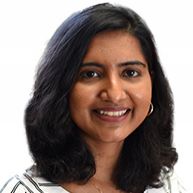
Ms. Gency Gunasingh
Ms. Gency Gunasingh completed her Master of biotechnology degree from University of Queensland in 2012 and did her Masters project under Dr. Andrew Prowse and Prof. Peter Gray at Australian Institute for Bioengineering and Nanotechnology. Her primary area of research was large scale generation of cardiac progenitors from embryonic stem cells in 3D. She then worked under Prof. Brian Gabrielli at UQ Diamantina institute on developing 3D tumour spheres in melanoma for in vitro drug testing. She currently works for Prof. Nikolas Haass at UQDI on understanding tumour heterogeneity and tumour architecture in melanoma spheroids.
.jpg?rev=2087)
Dr. Dong Gao
Dr. Dong Gao is the Principal Investigator of Shanghai Institute of Biochemistry and Cell Biology, Chinese Academy of Sciences. His research interests mainly focus on t prostate adult stem cell and the establishment of patients-derived cancer organoid biobank. He has authored more than 40 papers including Cell, Nature Genetics, Cell Stem Cell et al.
.jpg?rev=1436)
Dr. Yu Weimiao
Dr. Yu Weimiao obtained his Ph.D. from the National University of Singapore (NUS) in 2007, majoring in image processing and machine vision. He joined the Agency of Science, Technology and Research (A*STAR) in 2007. He is currently heading Computational Digital Pathology Lab (CMPL) in BII to deepen and extend the R&D with clinical and industrial partners. He is also the joint PI in IMCB leading the Computational & Molecular Pathology Lab (CMPL). His research interests are Computational Biomedical Image Analysis and Quantitative Imaging Informatics. He applied 3D image analysis solution to segment and tracking the cells in 3D to understand the developmental problem and collective cell migration mechanisms. His work was published in Nature Communication, Current biology, Nature Cell Biology, etc. To enhance the applications in clinical diagnosis/prognosis, he co-founded a biotech company, known as A!maginostic Pte. Ltd. He established a world-class joint platform for the immunodiagnosis at the tissue level. The platform allows the researchers, clinicians, and pharma to profile the patient immune signature for diagnosis, prognosis, and drug response study.
.jpg?rev=9A5C)
Dr. Motoki Takagi
Dr. Motoki Takagi received PhD from Graduate School of Agriculture and Life Sciences, the University of Tokyo in 2001. Then he continued his research as a postdoctoral fellow at Institute of Molecular and Cellular Biosciences, the University of Tokyo. He was engaged in the research of nucleic acid drugs at Genencare Research Institute, Co. Ltd. since 2002. Since 2006, he conducted drug discovery research at Biological Systems Control Team, Biomedicinal Information Research Center, Japan Biological Informatics Consortium. Since 2012, he has been researching chemical biology as an associate professor at Fukushima Medical University and became a professor in 2014.
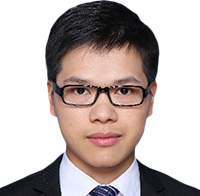
Dr. Ningbo Wu
Dr. Ningbo Wu is an Associate Professor at Shanghai Institute of immunology, Shanghai Jiaotong University School of Medicine. His research interests mainly focus on the function of intestinal stromal cells in intestinal homeostasis and related work was published in Nature and Science CHINA Life Sciences, et al.

Dr. Nuno Costa-Borges
Nuno Costa-Borges is devoted to offering quality control (QC) tests, training, and consulting services to the IVF community worldwide. With over 18 years’ experience, Nuno completed a PhD focused on improving animal cloning efficiency before joining IVI Barcelona as a clinical embryologist. Now, as cofounder and scientific director of Embryotools, Nuno is committed to developing new IVF techniques, which have led to the world’s first babies via maternal spindle transfer for infertility and to the development of the first robotic system for intracytoplasmic sperm injection successfully tested clinically.

Akira Saito
Akira studied veterinary medicine at Tokyo University of Agriculture and Technology, Japan and graduated in 2007. Shortly after, he joined Olympus as application specialist responsible for in vivo imaging systems, high-content analysis systems, and laser confocal systems to support customers in Japan. In 2013, he took over sales promotion for all Olympus life science products. From 2018, he moved to Singapore and joined to support the marketing and application support for the APAC market.
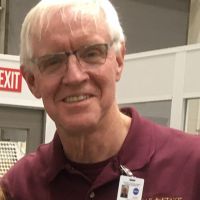
Bob McLean
Bob McLean has over 30 years’ experience as a microbiologist, during which time he and his lab have done a number of studies on surface-adherent microorganisms (biofilms). In 1998, he and his colleagues had an experiment on the space shuttle with John Glenn, in which they were one of the first research groups to show that biofilms could form in microgravity. Since that discovery, there have been a number of biofilm issues, notably instances of fouling in the water recovery system in the International Space Station and other spacecraft. In 2015, Bob, along with collaborators at Arizona State and the Johnson Space Center, received a NASA grant to study biofilm formation during spaceflight. Confocal and other types of microscopy have been instrumental in these investigations.
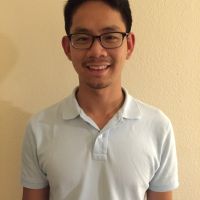
Jesse Chao
Jesse completed his Ph.D. at the University of British Columbia (UBC) in cell biology and genomics. He then continued his training at the University of California, San Diego. After, he switched his focus to developing machine learning approaches for assessing the physiological impacts of genetic variants associated with hereditary cancer at UBC. During this time, he started to develop deep learning approaches to automated phenotypic profiling based on high-content imaging data.

James Lopez
James Lopez received his Ph.D. in biomedical sciences from the University of Chicago in 2010. With nearly a decade of experience in calcium imaging, FRET, live cell imaging, and intravital imaging, James joined Olympus as a confocal and multiphoton sales representative. He later transitioned to the Olympus Life Science Applications Group, supporting confocal and multiphoton systems. Now he manages the Life Science Applications Group in the US, Canada, and Latin America markets.

Yosuke Yoneyama
Yosuke Yoneyama obtained his Ph.D. from The University of Tokyo in Japan, where he continued his post-doctoral work on insulin/insulin-like growth factor signaling with a focus on spatiotemporal control of the intracellular signaling system in the laboratory of Dr. Shin-Ichiro Takahashi. He then joined the laboratory of Dr. Takanori Takebe at Tokyo Medical and Dental University in Japan as an assistant professor. He now focuses on human organoids, in particular liver organoids, that are derived from stem cells, including induced pluripotent stem cells (iPSCs), to reconstitute multiple lineages of liver cells both for human development and modeling diseases such as non-alcoholic steatohepatitis.
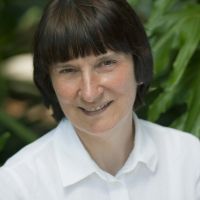
Ewa Goldys
Professor Ewa M. Goldys is Deputy Director of the Australian Research Council Centre of Excellence in Nanoscale Biophotonics (cnbp.org.au) and Professor at the Graduate School of Biomedical Engineering, the University of New South Wales, Sydney, Australia. She is Fellow of SPIE, OSA, the Australian Academy of Technological Science and Engineering (ATSE), and winner of the 2016 Australian Museum Eureka Prize for ‘Innovative Use of Technology.’ She has ongoing involvement with SPIE BIOS, the world's largest international biomedical optics meeting and SPIE's Photonics West where she serves as Track Chair in Nanobiophotonics.
Her research spans the areas of biomedical science, bioimaging, biosensing, and materials science. She developed novel approaches to biochemical and medical sensing and deployable medical diagnostics. Current projects focus on cancer nanotechnology and non-invasive high-content imaging of colors and patterns in cells and tissues.
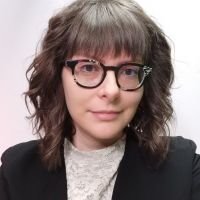
Laura Vittadello
Dr. Laura Vittadello is working as a post-doc in the physics department of the Osnabrück University in the ultrafast physics research group. Her research focus is on the fundamental study and application of a new type of marker, harmonic nanoparticles, that are specially designed for biological applications that involve nonlinear microscopy.
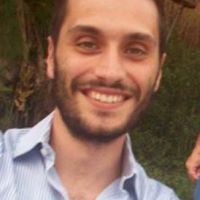
Francesco Cardarelli
After receiving his M.Sc. in Biological Sciences from the University of Pisa in Oct 2003 and his Diploma in Biological Sciences in the same year (both with honors) from SNS, Francesco Cardarelli worked at the NEST Laboratory of SNS as a Ph.D. student in Molecular Biophysics under the supervision of Prof. Fabio Beltram. He started his interdisciplinary research at the crossroads between cell biology and physics, using advanced fluorescence microscopy methods to study the intracellular transport properties of virus-derived peptide sequences. After graduating, he became a Post-Doctoral Fellow at the Laboratory for Fluorescence Dynamics, University of California at Irvine, under the supervision of Prof. Enrico Gratton, where he coordinated the research activity for the development of new spatial variants of fluorescence correlation spectroscopy to detect barriers to molecular diffusion/flow in live cells. In Dec 2010 he was hired by the CNI@NEST (IIT) as a Post-Doctoral Fellow. Back in Italy, he started working to develop new fluorescence-based imaging and analysis methods to study single molecules in complex biological systems with high spatiotemporal resolution. This research was boosted by a number of funded grants (and established collaborations) and by an independent scientific position, first at CNR as a Researcher, then at SNS as Professor in Applied Physics.
The focus of his research is on the development of new optical microscopy techniques to increase the amount of quantitative information that can be extracted from investigations on living matter. For instance, in recent years, he and his team introduced a number of new spatiotemporal fluctuation-analysis tools (iMSD, iRICS, nD-pCF, diffusion tensor analysis, etc.) to extract structural and dynamic properties of biological objects, from molecules to entire sub-cellular structures, in their complex natural environment. Such a toolbox is becoming a new paradigm for biophysical investigations at the nanoscale, as featured in the “New and Notable” section of Biophysical Journal (2016 Aug 23; 111(4): 677–678). In 2014, together with his Team, they demonstrated the occurrence of short-range protein Brownian motion in the cell cytoplasm, being among the first to challenge the current view of the structural organization of the crowded intracellular environment. Finally, by combining this toolbox with feedback-based orbital tracking, they demonstrated that even the nanoscopic and dynamic environment of intracellular organelles can be quantitatively probed.

Sandrine Roy
Dr. Roy completed a double-major in Biochemistry and Microbiology followed by the completion of a Doctor of Philosophy in 2002 in the field of Molecular Biology/Cell Biology at the University of Queensland Australia. She travelled abroad to undertake a post-doctoral position at Washington University in St Louis, USA. She then returned to Australia to continue her post-doctoral studies.
With her extensive microscopy experience, she was appointed as the University of Queensland Diamantina Institute Microscopy Facility Manager in 2009 and later as manager of microscopy services at the Translational Research Institute in Brisbane until 2019.
She is now Business Development Manager at Olympus Australia, where her experience and knowledge is used to support customers both in Australia and New Zealand.
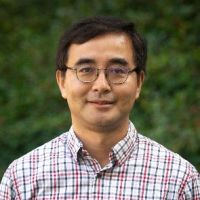
Seungil Kim
Seungil Kim, Ph.D., is a Staff Scientist and Microscopy Team Manager at the Lawrence J. Ellison Institute for Transformative Medicine at USC. Dr. Kim completed his B.S. and M.S. degrees in South Korea. He then moved to Washington University and received a doctoral degree in Developmental Biology. He carried out his postdoctoral research in the department of Cell and Tissue Biology at UCSF. Seungil has over 10 years of experience working with various in vitro/in vivo models and advanced cellular imaging techniques. His current research focus is to understand the contributions of the tumor microenvironment to drug response, using patient-derived 3D organoids as a model system. Moreover, he is developing high-throughput automated imaging methods to screen novel drug compounds in colorectal cancer.
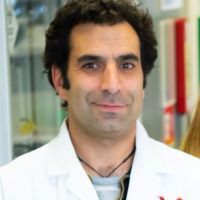
Alfonso J. Schmidt
Alfonso has a decade of experience working in a shared resource lab (SRL) with a vast knowledge in histology, fluorescent microscopy, and image analysis. His work has been focused in maximizing the capabilities of the equipment available and in creating technical protocols and training modules for the scientific community. Currently, Alfonso oversees the Histology and Bioimaging Facility as part of the Hugh Green Cytometry Centre (HGCC) at the Malaghan Institute of Medical Research in Wellington, New Zealand.

Tong Wu
Tong Wu joined Olympus in 2012 after completing her Ph.D. in China (State Key Laboratory of Fine Chemicals, DLUT). Now, Tong is a business development manager, supporting high-end microscopes in Olympus Australia. With a research background in fluorescent dyes for bio-imaging and bio-labelling, Tong Wu is enthusiastic to engage with customers’ research applications.
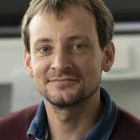
Ruben Portugues
Prof. Portugues is a neurobiologist studying sensorimotor control. His research group uses behavior, modeling, optogenetics, in vivo electrophysiology, and whole brain functional calcium imaging to dissect learning, memory, and action selection in the larval zebrafish.
Prof. Portugues studied mathematics and did his Ph.D. in theoretical physics at Trinity College in the University of Cambridge. After a short postdoctoral fellowship in physics at Centro de Estudios Cientificos in Valdivia, Chile, he joined Professor Florian Engert’s laboratory at Harvard University and switched research interests to neuroscience. In 2014 he was appointed Max Planck Research Group Leader at the Max Planck Institute of Neurobiology in Martinsried. Since 2020 Prof. Portugues is an assistant professor at the TUM.
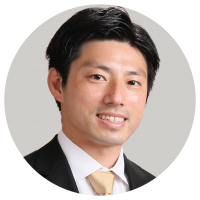
Atsuya Toda
Atsuya Toda is an assistant manager for Global Life Science Marketing at Evident. He has more than fifteen years’ experience in life science microscopy sales, sales planning, and marketing in Japan. In 2021, he moved to the Global Life Science Marketing team where he is the marketing representative for the APEXVIEW APX100 all-in-one microscope. He holds a Bachelor of Economics degree from Doshisha University, Japan.

Dr. Laura Lleras Forero
Laura Lleras Forero is the product marketing manager for cell culture products at Evident. She completed her PhD at King’s College London and undertook postdocs in Utrecht, Berlin, and Münster. She has been with Evident since 2021, supporting cell culture microscopy solutions, the SLIDEVIEW™ VS200 research slide scanner, and the APEXVIEW™ APX100 all-in-one microscope for Europe, the Middle East, and Africa (EMEA).
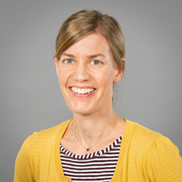
Ines Hartmann
Ines Hartmann is an application specialist for cell handling at the Eppendorf headquarters in Hamburg, Germany. She joined the company in 2008 and has worked on several topics in cell handling, liquid handling, and consumables. She obtained her diploma degree in biology at the Humboldt University of Berlin, Germany and has expertise in various laboratory techniques.
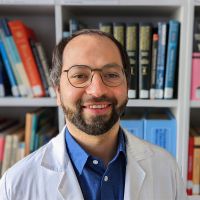
Amin El-Heliebi
Featured Speaker Amin El-Heliebi (Professor) Professor Amin El-Heliebi was educated in Graz, Stockholm and Buenos Aires and was appointed Research Professor 2021 at the Medical University of Graz, Austria. His research focus lies in molecular biomarkers, cancer research, liquid biopsy, tumor biology, and spatial transcriptomics. His overarching research question deals with understanding tumor dissemination. His research group investigates liquid biopsies, such as circulating tumor cells (CTCs) and circulating tumor DNA (ctDNA). Their overall aim is to track and trace liquid biopsies back to the originating tumor mass and identify the mechanisms involved in spreading of metastatic disease.
Ask The Experts
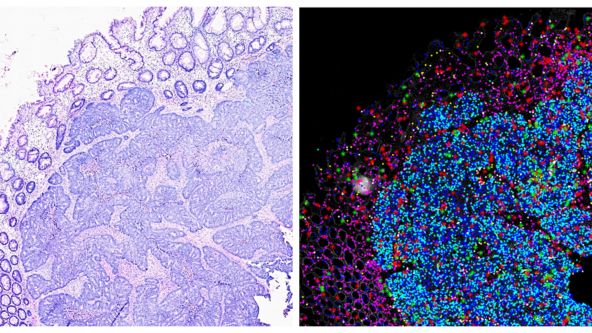
Investigating Tumor Dissemination by Spatial Transcriptomics
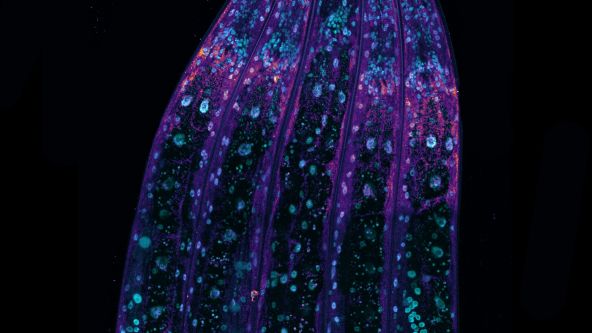
Transforming Precision Imaging: Meet the FLUOVIEW™ FV4000 Confocal Microscope
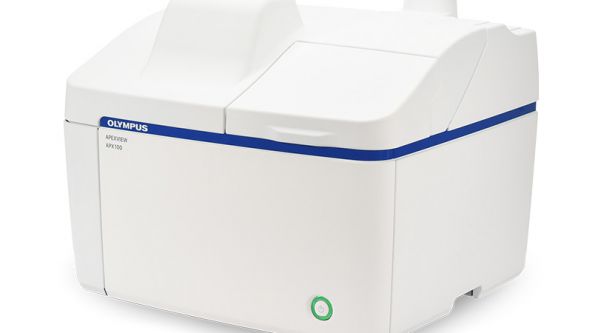
Introduction to the APEXVIEW™ APX100 Digital Imaging System
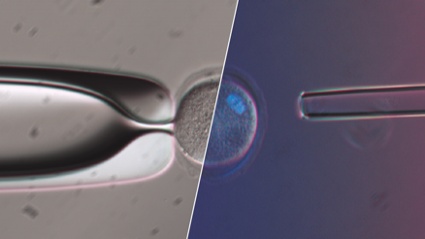
How Polarized Light Can Assist Embryologists in Clinical Routines
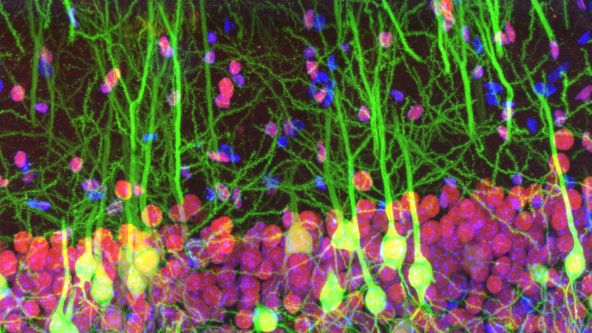
Unveiling Nanoscopic Realms: A Journey into Super-Resolution Microscopy
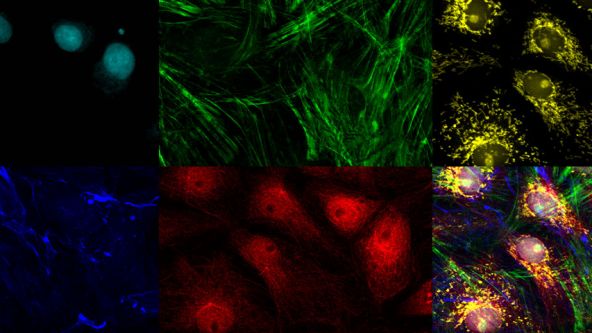
Multiplexing and Deep Tissue Imaging with NIR Confocal Laser Scanning Microscopy (Encore Edition)
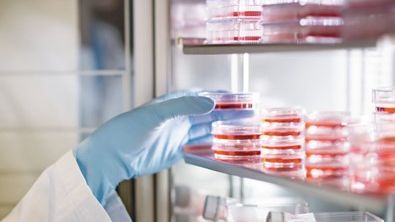
Good Cell Culture Practice—How to Improve the Reproducibility of Your Experiments
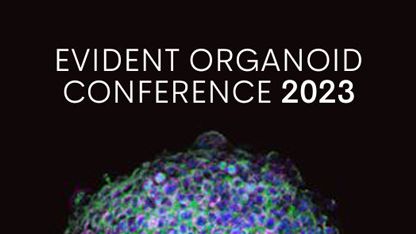
EVIDENT Organoid Conference 2023 - Looking Deeper, Capturing Complexities
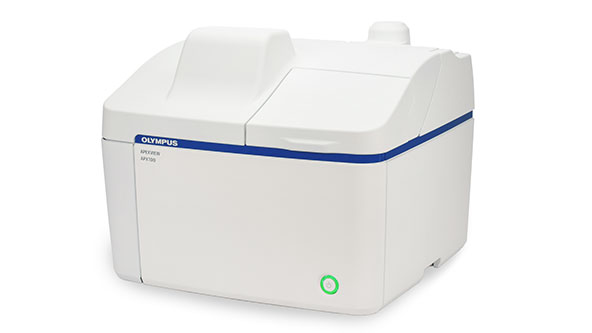
Exceptional Imaging Made Easy: Meet the APEXVIEW™ APX100 All-in-One Microscope
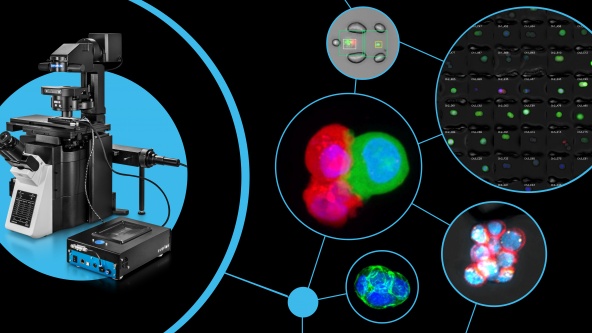
Technology Evaluation: Deciphering Cell-Cell Interactions in a 3D Microenvironment at a Single-Cell Resolution
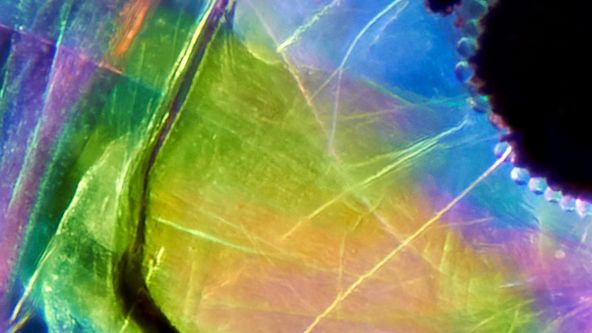
Olympus Bioimaging Conference: Entdeckung neuer Dimensionen | 3-tägige virtuelle Veranstaltung | 9. bis 11. März 2022
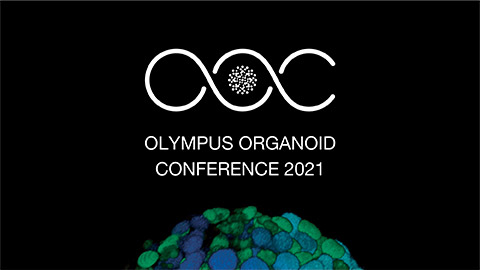
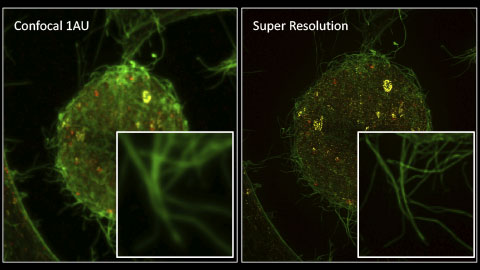
Super Resolution Imaging lebender Zellen: Das große Bild der kleinen Dinge
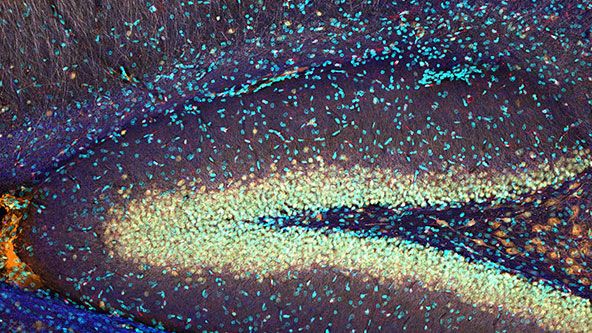
FV3000 Red Near-Infrared (NIR) Solutions for Confocal Microscopy | 2 p.m.

FV3000 Red Near-Infrared (NIR) Solutions for Confocal Microscopy | 10 a.m.
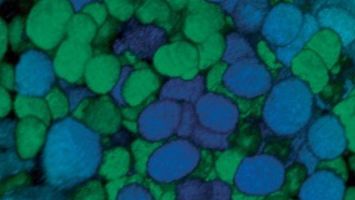
Olympus Organoid Conference 2021
.jpg?rev=3E0D)
Mikroskop-Objektive: Wo die Magie beginnt
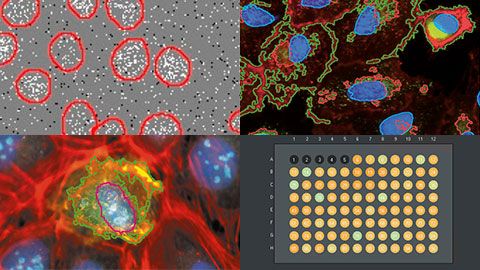
High-Content-Screening: Benutzerspezifische Analyse leicht gemacht
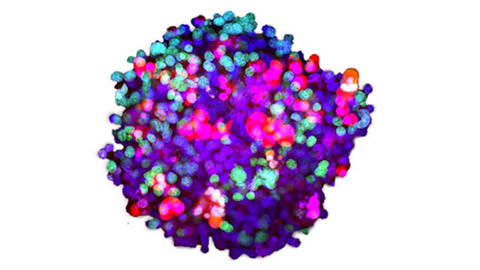
Dreidimensionale hochleistungsfähige Bildanalyse von Organoiden und Sphäroiden aus Patientenzellen
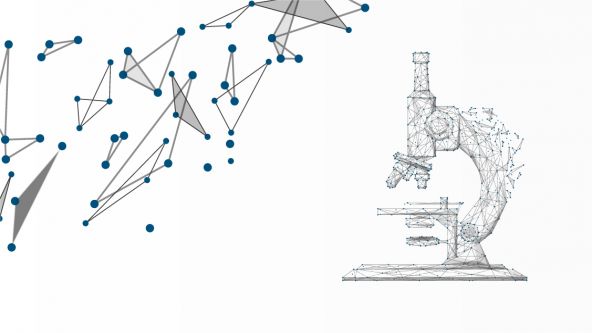
Olympus Discovery Summit: Advance Your Imaging | 26.–27. Oktober 2021
.jpg?rev=1940)
Digitale Bildverarbeitung Teil 2: Erweiterte Bildverarbeitungsfilter
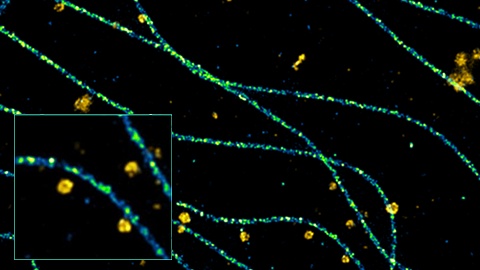
3D-Darstellung mehrerer subzellulärer Strukturen im Nanometerbereich
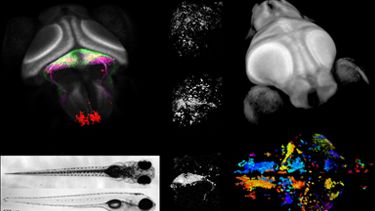
Whole-Brain Functional Calcium Imaging Using Light Sheet Microscopy
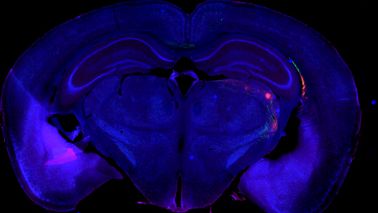
Product Demo: SLIDEVIEW™ VS200 Research Slide Scanner

Product Demo: SLIDEVIEW™ VS200 Research Slide Scanner

The Use of Multiplexing in Microscopy for Better Understanding the Skin Immune System in the Context of the Tissue

Recent Advances in 3D Imaging and AI-Driven Data Analysis

Now You Have the Power to See More

Metabolic Imaging in Langerhans Human Islets with MPE and FLIM

Product Demo: IXplore™ SpinSR Confocal Super Resolution System

In-Vivo Tracking of Harmonic Nanoparticles by Means of a TIGER Widefield Microscope

Hyperspectral and Brightfield Imaging Combined with Deep Learning Uncover Hidden Regularities of Colors and Patterns in Cells and Tissues

Product Demo: FLUOVIEW™ FV3000 Confocal Laser Scanning Microscope

Product Demo: FLUOVIEW™ FV3000 Confocal Laser Scanning Microscope

Evolution of Scientific Digital Imaging Technologies and their Applications

Deep Learning Approaches to Automated Phenotypic Profiling

Deconvolution of 3D Image Stacks

Confocal Microscopy and Its Use for a Spaceflight Experiment

Accelerating Image Analysis with TruAI™ Deep Learning Technology

A New Way of Thinking—Object Detection with Deep Learning
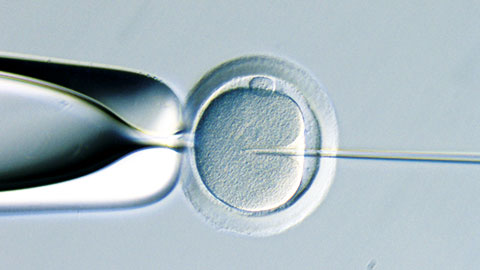
ICSI - How to improve your technique
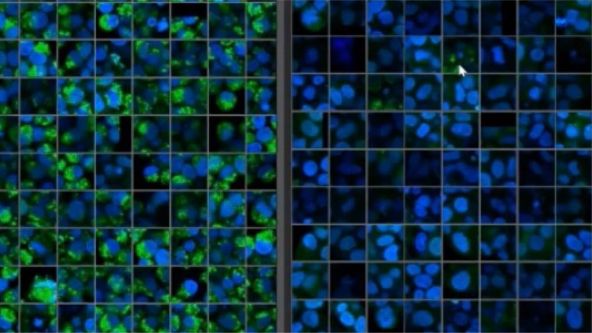
NoviSight™ Demonstration: 3D Image Analysis and Statistical Software for Organoids and Spheroids

Study the Function of Stromal Cells through Intestinal Organoid Co-Culture Technology

An In Vitro System for Evaluating Anticancer Drugs Using Patient-Derived Tumor Organoids
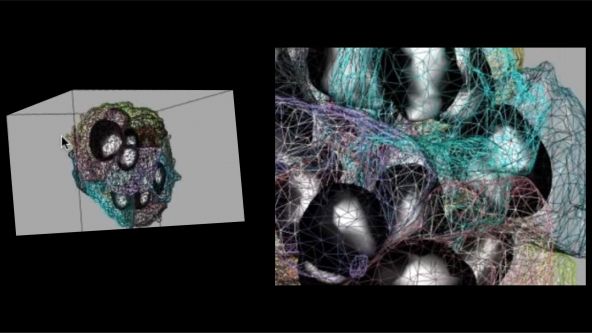
3D Segmentation for Fluorescence Images: From Qualitative to Quantitative

Prostate Cell Lineage Hierarchy and Plasticity

Investigating Spheroid Architecture Using the FV3000 Confocal Microscope

Advances in 3D Optical Imaging Technologies: An Overview

3D Microscopy: Understanding the Give and Take on Instrument Performance to Enable Informed Decisions
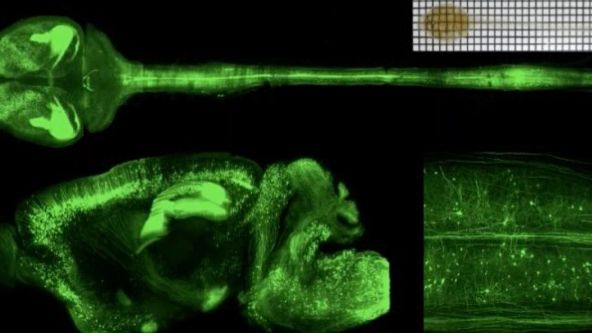
Tissue Optical Clearing Imaging: From In Vitro to In Vivo

Utilizing Tumoroids to Explore Anti-Tumor Immunity in Rectal Cancer

Converting from 2D to 3D: Bio-Techne Solutions for Your 3D Culture
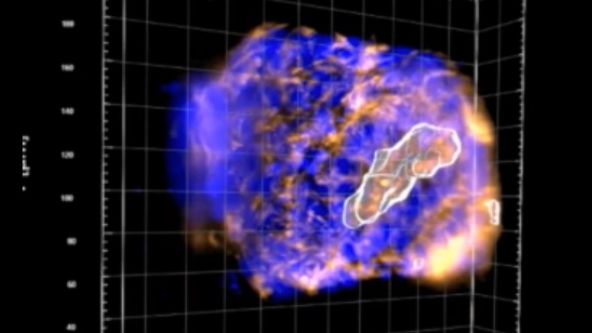
Culture and Quantitative 3D Imaging of Organoids: Challenges and Solutions
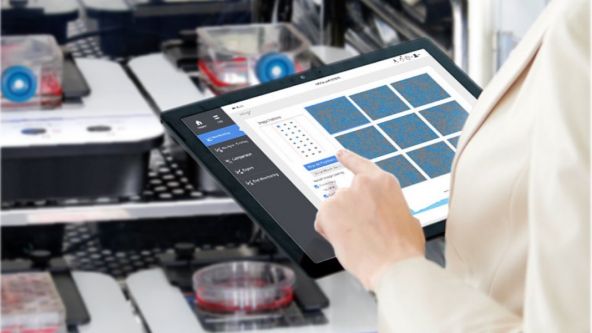
A Smarter Approach to Culturing and Nurturing Your Cells

Modern Slide Scanning: Single-cell Phenotyping on Fixed Samples (Encore Edition)
.jpg?rev=6A21)
To the Diffraction Limit and Beyond: The Nanoscale Organization of Axo-Axonic Synapses | 2 p.m.
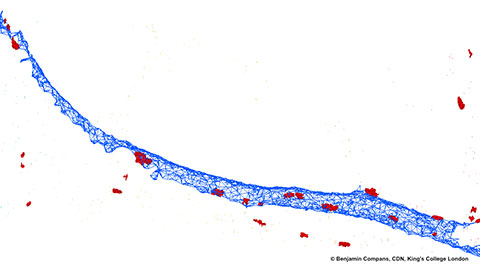
To the Diffraction Limit and Beyond: The Nanoscale Organization of Axo-Axonic Synapses | 10 a.m.
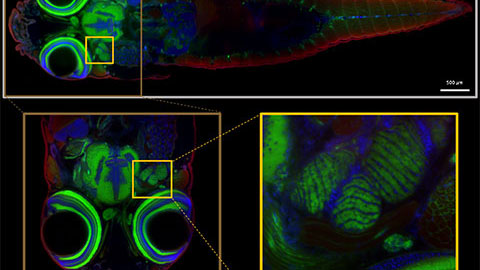
Light Sheet Microscopy – New multi-resolution and -color imaging methods

Create a Smarter Cell Culture Workflow

Digital Image Processing: Point and Local Operation Filters (Encore Edition)

Depth Matters: Transforming Biology for More Realistic and Meaningful Pursuits
.jpg?rev=FD74)
Microscope Objectives—Where the Magic Happens (Encore Edition)

Tiefere Einblicke in lebende Strukturen durch Lichtscheibenmikroskopie
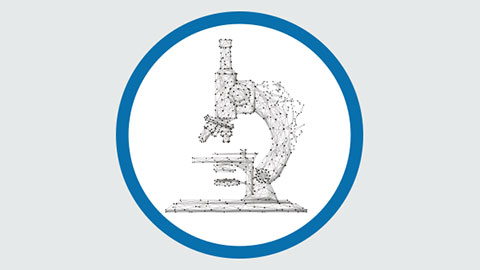
Olympus Discovery Summit—Looking Forward: A New Era of Research
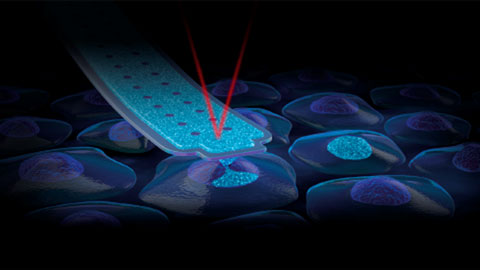
FluidFM: Ein neuer Ansatz für das CRISPR-Genediting durch direkte Einbringung in den Zellkern
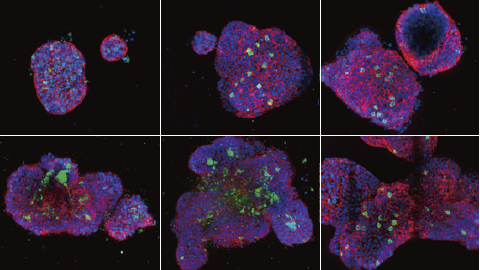
3D-Messungen: Intelligente Software, umfassende Analysen
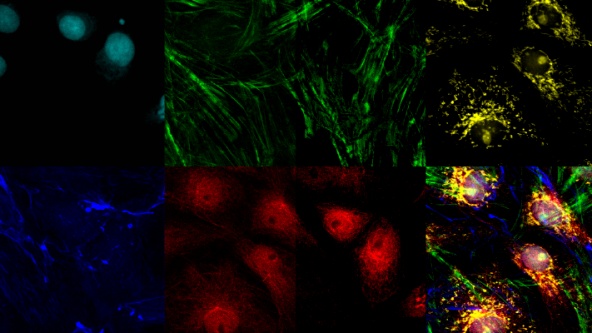
Multiplexing und Bildgebung tiefer Gewebeschichten mit konfokaler Nahinfrarot-Laser-Scanning-Mikroskopie
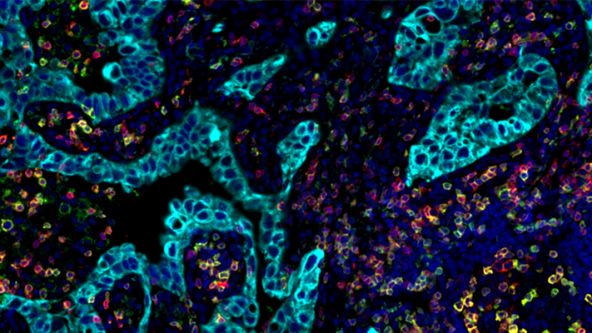
Modernes Objektträgerscannen: Phänotypisierung von Einzelzellen in fixierten Präparaten
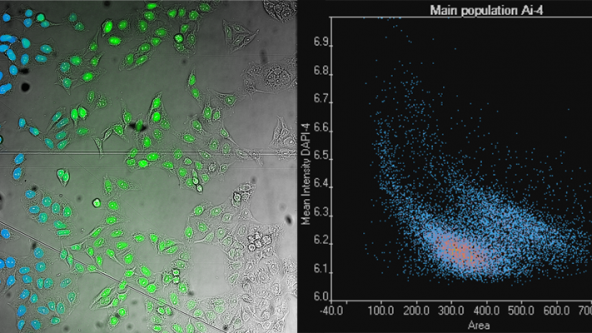
Deep Learning: Optionen für neue Anwendungen
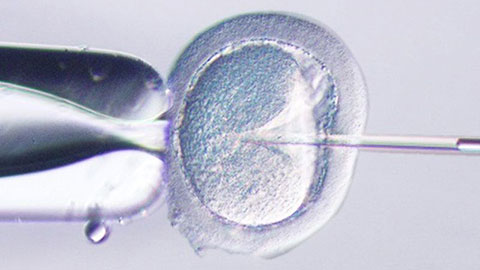
ICSI—Past, Present & Future
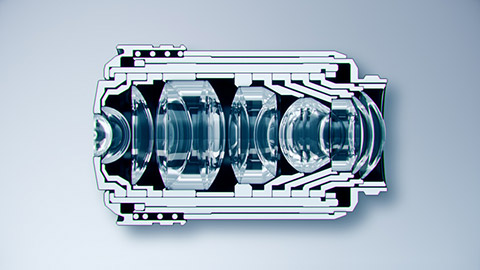
Microscope Objectives—Where the Magic Happens

Think Deep, See Deeper with Near-Infrared Laser Scanning Confocal Microscope

